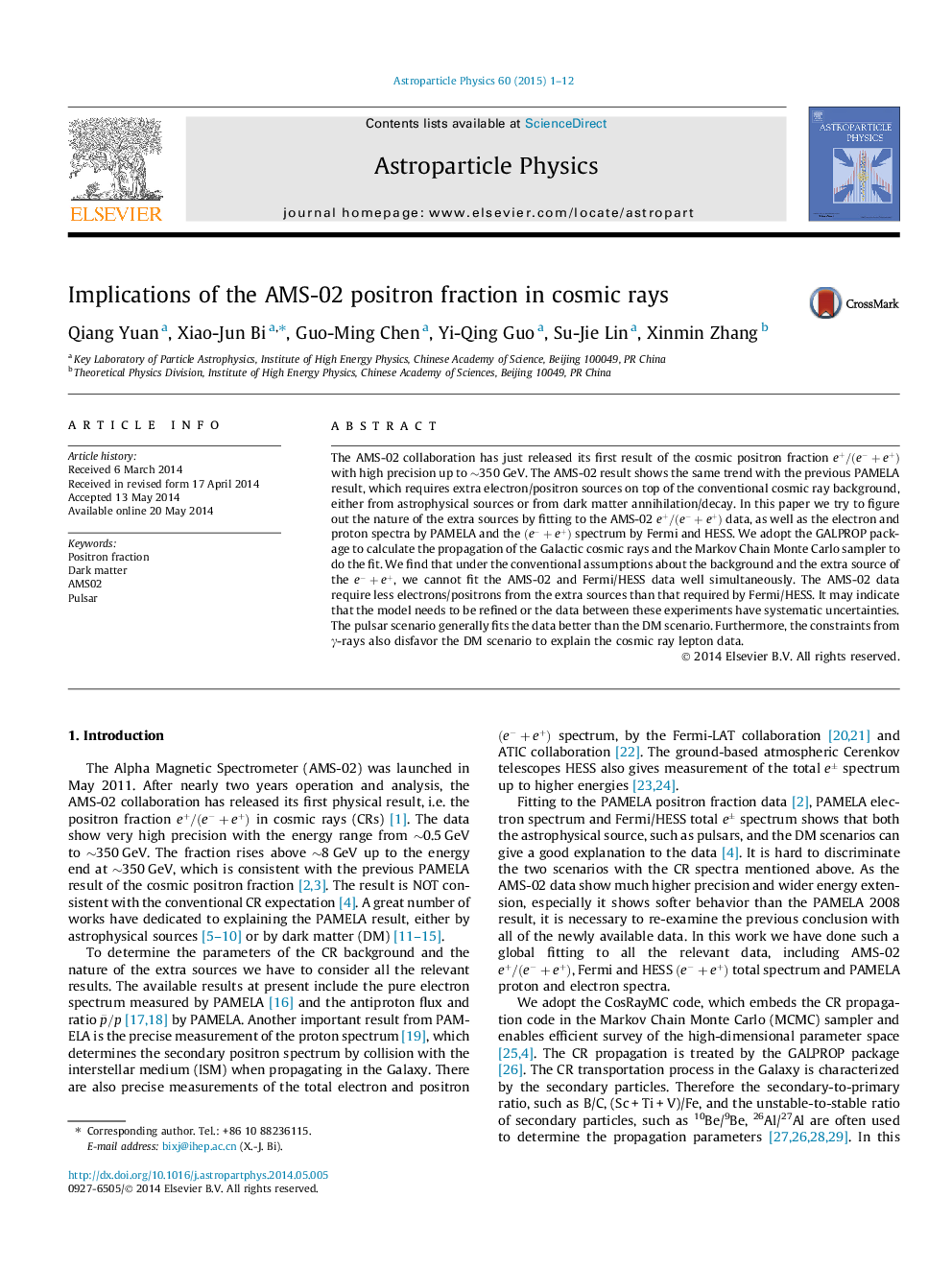| Article ID | Journal | Published Year | Pages | File Type |
|---|---|---|---|---|
| 1770515 | Astroparticle Physics | 2015 | 12 Pages |
Abstract
The AMS-02 collaboration has just released its first result of the cosmic positron fraction e+/(e-+e+) with high precision up to â¼350 GeV. The AMS-02 result shows the same trend with the previous PAMELA result, which requires extra electron/positron sources on top of the conventional cosmic ray background, either from astrophysical sources or from dark matter annihilation/decay. In this paper we try to figure out the nature of the extra sources by fitting to the AMS-02 e+/(e-+e+) data, as well as the electron and proton spectra by PAMELA and the (e-+e+) spectrum by Fermi and HESS. We adopt the GALPROP package to calculate the propagation of the Galactic cosmic rays and the Markov Chain Monte Carlo sampler to do the fit. We find that under the conventional assumptions about the background and the extra source of the e-+e+, we cannot fit the AMS-02 and Fermi/HESS data well simultaneously. The AMS-02 data require less electrons/positrons from the extra sources than that required by Fermi/HESS. It may indicate that the model needs to be refined or the data between these experiments have systematic uncertainties. The pulsar scenario generally fits the data better than the DM scenario. Furthermore, the constraints from γ-rays also disfavor the DM scenario to explain the cosmic ray lepton data.
Keywords
Related Topics
Physical Sciences and Engineering
Physics and Astronomy
Astronomy and Astrophysics
Authors
Qiang Yuan, Xiao-Jun Bi, Guo-Ming Chen, Yi-Qing Guo, Su-Jie Lin, Xinmin Zhang,
